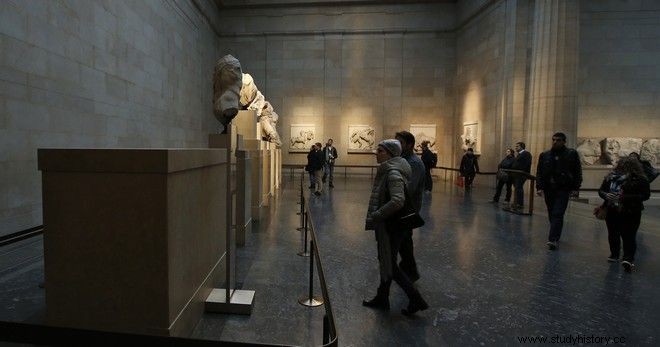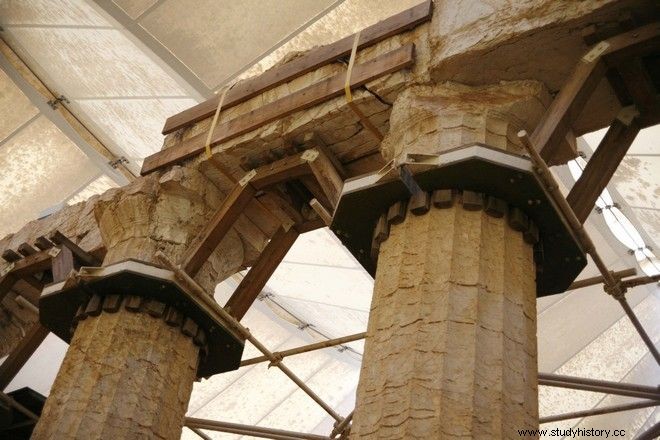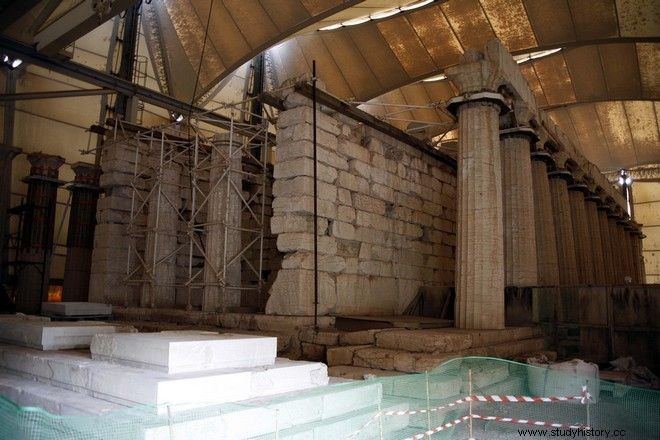It was 1799 when Thomas Bruce, 7th Lord of Elgin became England's ambassador in Constantinople. At that time Britain's policy was very influential on the Sultan as the British had given a lot of military aid to the Turks in the war against the French in Egypt.
The country's new ambassador to Turkey often expressed his admiration for Greek art. In the same year, 1799, the Lord of Elgin married Mary Nisbett and as a wedding gift he promised her a mansion that would be built by the famous architect Thomas Harrison.
The mansion was to be called Broom Hall and Harrison wanted to decorate it in a classical Greek style with effigies of ancient Greek sculpture.
Italian painter Giovanni Battista Lusieri was appointed to head the mansion's design team along with Harrison, and the team arrived in Athens to study the ancient monuments. In fact, he received permission to enter the Acropolis six months after the request to the Ottoman authorities.
The original aim was to obtain casts, but international tensions caused the group to withdraw in 1799 following the withdrawal of the Parthenon's work permit. Eventually Elgin managed to extract Kaimmecam Pasha's firman (the validity of which is still disputed by Turkey).
Earlier, Thomas Bruce's embassy chaplain, Reverend Ph. Hunt, had returned to Constantinople from his first trip to Athens, in the spring of 1800, with a detailed list of various works which Elgin's crew wished to carry out on the Acropolis.

Hunt then "succeeded" in August 1801 in bringing down the first metopes from the Parthenon with Elgin expressing his surprise, visibly pleased.
The Turkish authorities in Athens agreed to the removal of the marbles after their financing. The best preserved part of the monument was removed on July 31, 1801, with the help of a carpenter and 5 other crew members of a British ship.
Within three years, by 1804, Lord Elgin's team removed all the Elginian Marbles. From the Parthenon the Elgin team removed 56 zoophoro stones, 19 pediments and 15 metopes along with some architectural members from the monument.
Elgin had planned to return to Greece after his term in Constantinople ended in early 1803, but he was imprisoned by the French on his way home and went bankrupt. When he finally arrived in England he exhibited his loot in exhibitions in London while trying to sell it to the British state.
His first proposal fell through as he was worth £60,000 with the British government giving half. They finally agreed on 35,000 pounds. The purchase of the antiquities was decided by a vote of 82 in favor and 30 against in the British Parliament and despite what was said about the unfair way the lord acquired them.
The British Government transferred the Marbles to the British Museum at the expense of Sir Jozeph Duveen.
The historical record states that Elgin organized a total of 33 ship expeditions to transport his entire collection of relics. The 17 were about the Acropolis, while during the first mission, the ship "Mentoras" was wrecked off Kythera and it took two years to rescue the antiquities that sunk to the bottom.

A similar story to the one above also concerns the fate of the looting of the temple of Epicurius Apollo in Vasses of Figaleia, one of the most important and imposing of antiquity. It is one of the best preserved monuments of classical antiquity, being the best preserved temple after the temple of Hephaestus in Athens.
In 1812 the first systematic excavations were carried out by:J. Foster, C. R. Cockerell, K. H. von Hallerstein, G. Gropius, J. Linckh, O. M. Stackerlberg, and P. O. Brondsted and brought to light the frieze slabs and the Corinthian capital.
The findings were transferred to Zakynthos, with the consent of Velis Pasha, who had been bribed for this purpose. In 1814 the frieze was purchased by order of the English viceroy George and in 1815 it ended up in the British Museum. The English intellectual Christian Muller described the looting of the monuments as an act of vandalism, similar to that of Lord Elgin.

The 23 marble slabs of the so-called "second Parthenon" (attributed to Iktinos) are on display today in room 16 of the British Museum in London. The twelve plates depict the Amazon battle and the remaining eleven the Centaur battle.
And the zoophoro was probably the work of Paeonios who had designed the statue of Nike in Ancient Olympia.
It is worth noting that the temple of Epicurious Apollo was the first monument of the Greek territory to be included in the list of UNESCO World Heritage Sites, in 1986.
